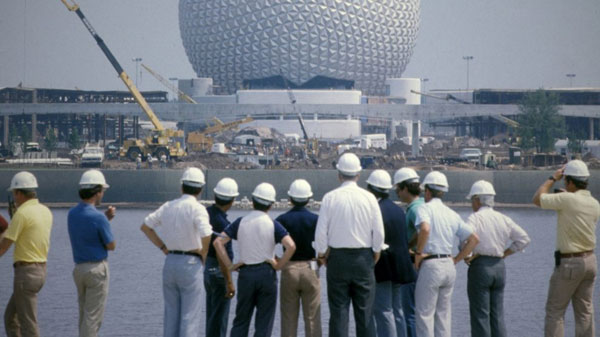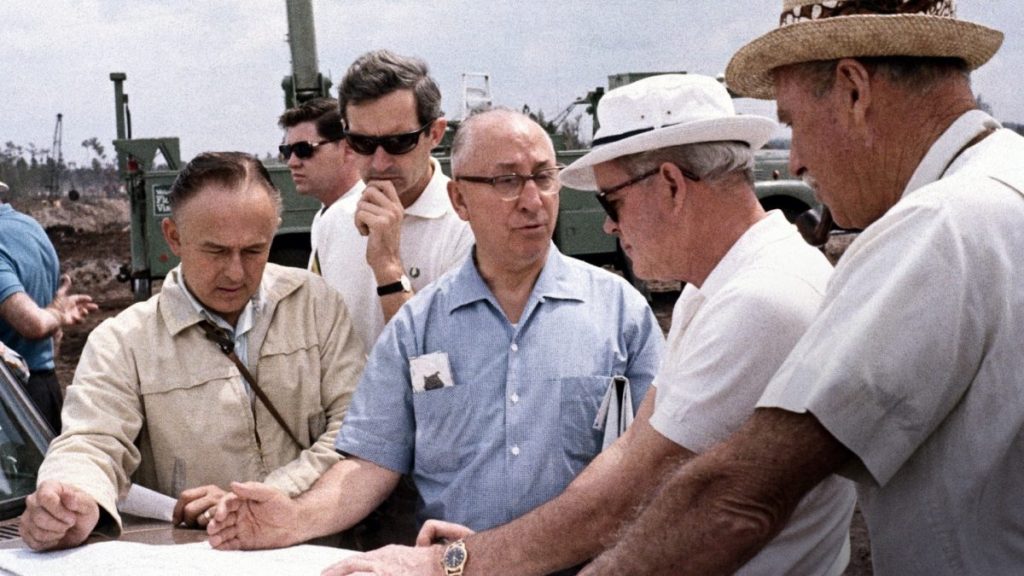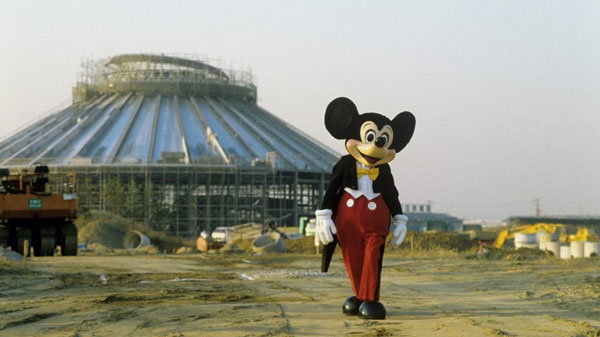
It’s a busy time for Disney’s theme parks with many new attractions on the horizon. This activity pales in comparison to the mayhem of 1982, however. EPCOT Center opened on October 1st with entirely new technology and ride systems throughout the park. Six months later on April 15th, 1983, Tokyo Disneyland opened as the first overseas park. The resources and effort needed to pull off both projects remains astounding. The mix of Imagineering legends and rising stars delivered beyond all expectations. The same is true of the latest episode of The Imagineering Story, which packs so much into a single hour.
Beginning after Walt’s death, this second episode takes us through the ‘70s and into the early ‘80s. Titled “What Would Walt Do?”, it covers the challenges for Disney without its leader setting the vision. Roy O. Disney delayed his retirement to ensure the Florida Project would work. It’s refreshing to see the focus on Roy’s essential contributions. Director Leslie Iwerks includes remarkable footage of the Utilidors and the activity on a typical day beneath The Magic Kingdom. Before that segment, it’s time for a close look at one of Disney’s greatest attractions!
Disney could easily release an entire documentary on The Haunted Mansion, but the episode’s opening segment still has a lot to offer. The focus on Yale Gracey includes fun effects to help explain his style. There’s also a ridiculous clip from the 1970 Wonderful World of Disney episode “Disneyland Showtime” where Kurt Russell visits The Haunted Mansion (along with the Osmonds). That episode deserves to be available on Disney Plus. The interview with Imagineer Kim Irvine about her mom Leota Toombs (Madame Leota) is another highlight. The way that Irvine describes being able to visit her mom at the Mansion hits home.

The Rise of MAPO
An under reported story in Walt Disney World’s history is the importance of computing systems to bring everything together. David Snyder created the Digital Animation Control System (DACS) to control The Magic Kingdom, and it still operates. It is wonderful to hear Snyder explaining the developments during the focus on MAPO, the manufacturing part of WED Enterprises. The segment is too brief to explain what David and others accomplished, but it provides a good starting point.
We also see Blaine Gibson sculpting heads for the Hall of Presidents, which reinforces the skill needed for that show. I loved the shot of a group of heads just sitting on the table while Gibson worked. One downside of including EPCOT Center and Tokyo Disneyland in this episode is limited time on Walt Disney World’s beginnings. There is a brief mention about the limited attendance at opening and Roy’s passing. His son Roy E. Disney helps alleviate the sadness by calling the five years up to 1971 the best of his dad’s life. Roy took charge and fought the battles to build the resort.
Don Tatum and Card Walker don’t receive glowing attention, largely because they took over after Walt. Bob Gurr explains how the Company was out of “Walt’s energy” during the ’70s. It’s not all bad news, however. John Hench’s leadership at WED saw the arrival of Space Mountain with his incredible exterior design. Tom K. Morris is one of the stars of this series thus far, and he explains the importance of adding a thrill ride. Space Mountain remains one of the most popular Disney attractions today.
The Dream Called Epcot
You could also easily do a full episode about EPCOT Center on The Imagineering Story. Even so, Iwerks does an excellent job summarizing what made the park so amazing. The passion in which Morris talks about EPCOT Center reinforces how inventive it was. I appreciate that narrator Angela Bassett notes how Disney “abandoned Walt’s principles” by moving away from EPCOT the city. It’s surprisingly frank to hear that comment from an official Disney production. I had a similar feeling with the segment on the layoffs near the end of this episode.
Iwerks presents remarkable behind-the-scenes footage of EPCOT Center’s construction, with strong contributions from Kevin Rafferty, Peggie Fariss, Glenn Barker, and Katie Olson. There’s a lot to cover in a short time, including digital audio, the Imagination pavilion, SMRT-1, and Spaceship Earth. I enjoyed seeing Fariss (who was great on the podcast) have the chance to talk about the flagship attraction and the focus on keeping stories entertaining. Barker’s story about the start of digital audio here is the perfect primer for his podcast. This episode is basically just a hall of fame of Tomorrow Society Podcast guests!
Another highlight is the history of Circle-Vision, which remains part of Epcot. It’s easy to consider it an outdated medium, but it directly connects to the evolution of immersive attractions like Soarin’ and Flight of Passage. It’s a clear look at the history of the format, including the start with Cinerama. That initial format inspired Walt to push for Disney’s variation on the surround theater, Circarama.

A Time of Transition
Imagineering’s next step was opening Toyko, and the Oriental Land Company really pushed for the best Disney could offer. It’s interesting that Japan became enamored with Disney following restrictions after World War II. I’ll admit that I don’t know much about the construction of Tokyo Disneyland, so the background on Masatomo Takahashi’s vision helps. The details on Oriental Land Company members shadowing in Disneyland also provide an engaging story.
The Imagineering Story ends its second episode on a somber note with attention on layoffs and a possible hostile takeover from Saul Steinberg. The cuts arrived after EPCOT Center and Tokyo opened, and so many lost their jobs. Disney’s movies were struggling, and the Company was a takeover target. Would Imagineering survive? The stage was set for powerful, ambitious new leaders to arrive and change everything.
Check out my thoughts on the first episode of The Imagineering Story, “The Happiest Place on Earth”, at this link.



Leave a Reply